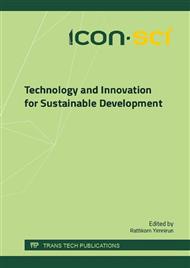p.162
p.166
p.170
p.174
p.178
p.182
p.187
p.191
p.195
A Study of Thermal Properties of Commercially Available Innerwear
Abstract:
In this study, three commercially available innerwears were collected from the market. Their air permeability and thermal properties were evaluated by Kawabata Evaluation System for Fabric (KES-F). Exerimental results revealed that the fibre content played an important role in affecting the air permeability and the thermal properties of the innerwears.
Info:
Periodical:
Pages:
178-181
Citation:
Online since:
July 2016
Authors:
Price:
Сopyright:
© 2016 Trans Tech Publications Ltd. All Rights Reserved
Share:
Citation:


